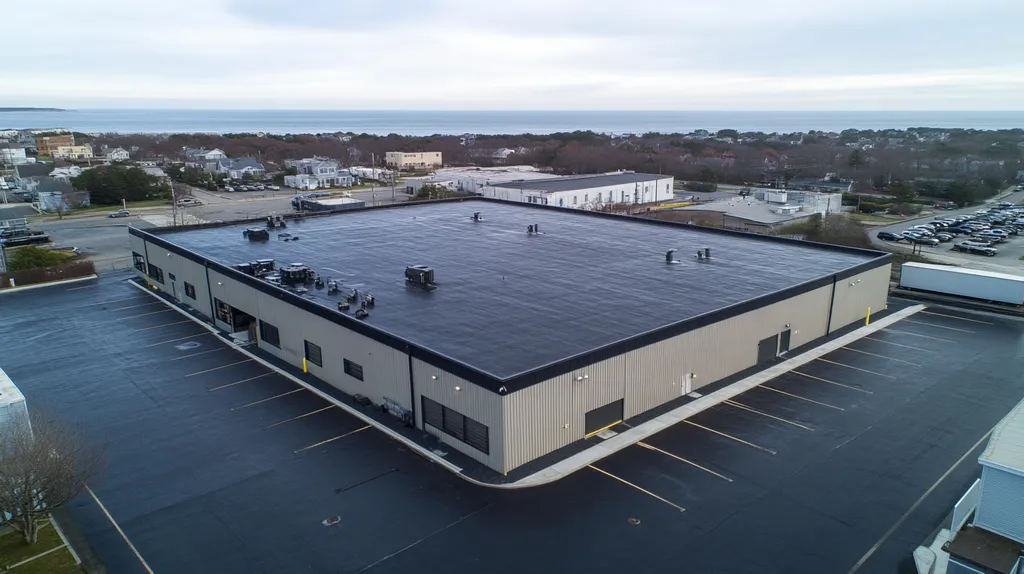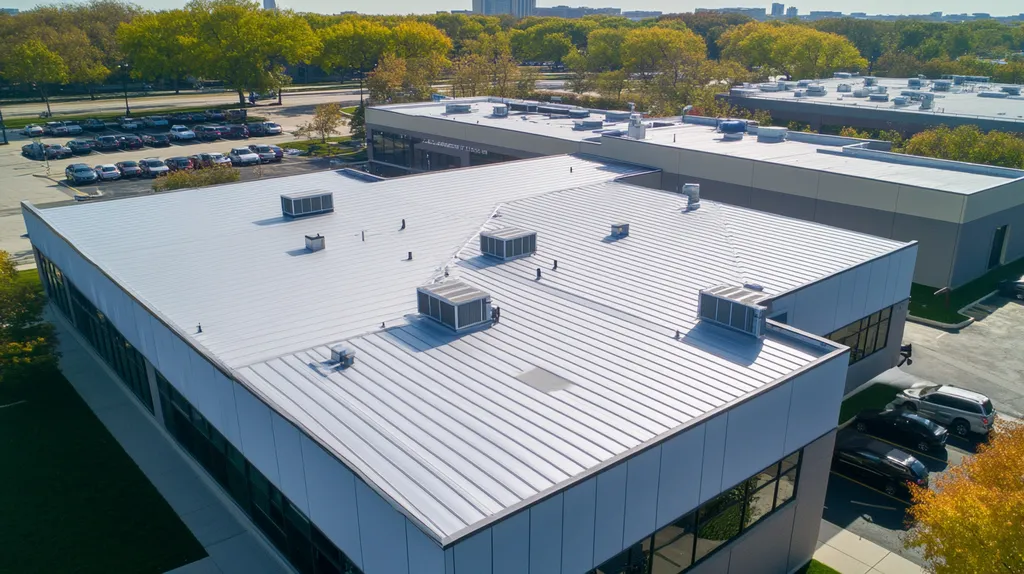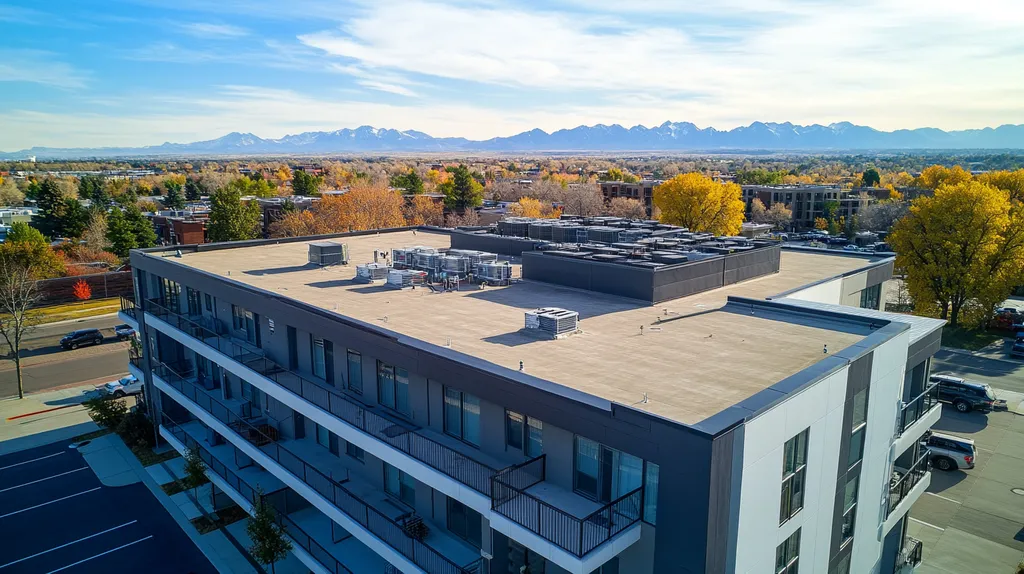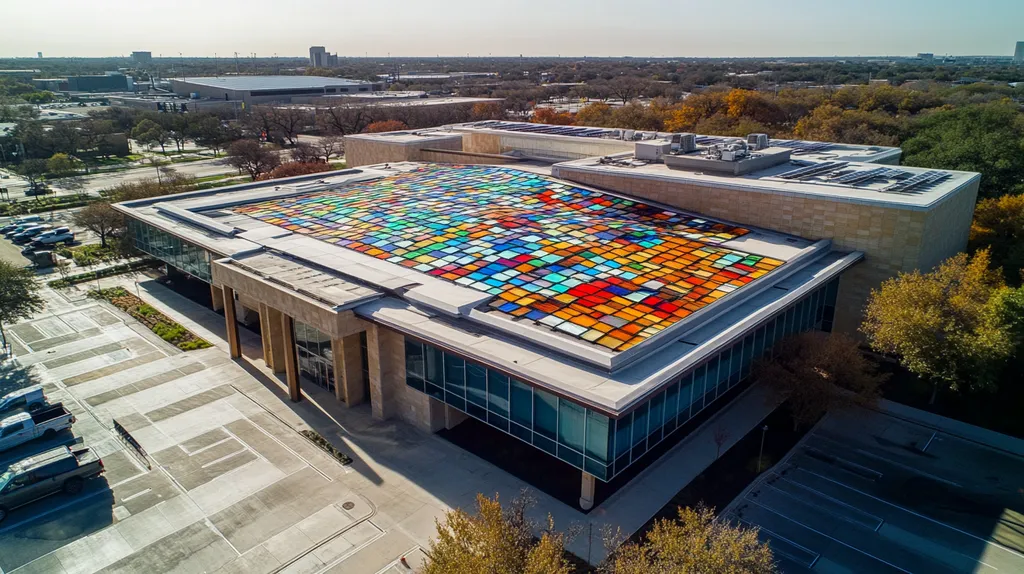In bustling commercial districts, construction disruptions can slash neighboring business revenues by up to 30%, creating lasting rifts between property owners and local merchants. Recent industry studies show that over 65% of roofing projects trigger complaints from adjacent businesses due to noise, access restrictions, and dust.
The rise of mixed-use developments and densifying urban cores makes managing these disruptions more critical than ever. Modern roofing projects require sophisticated coordination strategies that balance technical requirements with community impact.
This comprehensive guide examines proven methods for minimizing construction disruption through strategic scheduling, noise mitigation, access management, and stakeholder communication. Property professionals will find actionable solutions for maintaining positive relationships while completing essential roofing work.
SECTION 1: PERFORMANCE FACTORS
Disruptions caused by roofing work can lead to serious financial repercussions and strained relationships with neighboring businesses. In bustling urban areas, factors such as noise pollution, restricted access, and poor scheduling can significantly hinder the daily operations of nearby establishments. It is crucial for property professionals to adopt actionable strategies that minimize these construction disruptions. This section highlights essential performance factors, encompassing scheduling and timing strategies, noise mitigation techniques, and efficient access and egress management.
Scheduling and Timing Strategies
Effective scheduling is paramount for mitigating disruptions in roofing projects. Property managers must consider local business hours when planning work, strategically scheduling noisy tasks for late afternoons or weekends. By aligning project timelines with tenant activity levels, professionals can lessen the impact on surrounding businesses.
Close coordination with tenants enhances these scheduling efforts. Sharing detailed timelines empowers businesses to adjust their operations and prepare for any disruptions. Sending notifications well in advance not only reduces complaints but also builds goodwill.
Adopting a flexible project approach ensures readiness for sudden changes, such as inclement weather that may necessitate rescheduling. This adaptability safeguards project timelines and enhances satisfaction among neighboring businesses. Keeping stakeholders informed with regular updates fosters a spirit of cooperation, enabling businesses to develop contingency plans as needed.
Key Action Items
Noise Mitigation Techniques
Noise pollution is a significant concern during roofing projects, often threatening the productivity of nearby businesses. By implementing noise mitigation techniques, professionals can substantially lessen disturbances. Using sound barriers, for instance, helps absorb and deflect construction noise.
Choosing quieter tools and equipment can also yield impressive results. Many manufacturers offer advanced, low-noise options for essential roofing tasks. Transitioning to these tools not only reduces sound levels but also contributes to a more pleasant work environment.
Training workers in sensitive practices can further minimize noise. Scheduling noisier tasks during off-peak hours allows for a more harmonious coexistence with nearby businesses. Incorporating technology, such as noise monitoring systems, can help property managers monitor sound levels in real-time, enabling swift adjustments to keep disruptions within permissible limits.
Key Action Items
Access and Egress Management
Managing access and egress efficiently is vital to minimizing disruptions during roofing work. Obstructed entrances or exits can frustrate neighboring businesses and throw operations into disarray. Creating a clear plan for pedestrian and vehicle access is essential for maintaining smooth workflows.
Designating specific pathways for workers and pedestrians ensures safe movement around the work site. Adequate signage can guide foot traffic away from active areas, reducing complaints and enhancing safety. Utilizing temporary fencing can help create safe zones without overly restricting access.
Effective communication about access plans with local businesses can preemptively resolve concerns. Engaging in early discussions regarding delivery access and customer visits is beneficial. Moreover, having a responsive onsite team can swiftly resolve any unplanned access issues, fostering goodwill and demonstrating respect for neighboring operations.
Key Action Items
SECTION 2: FINANCIAL CONSIDERATIONS
Construction disruptions pose a serious threat to the financial health of nearby businesses. Reports indicate that these disturbances can lead to revenue losses of up to 30% for affected properties during renovation phases. For commercial and industrial entities, it becomes crucial to meticulously plan budgets that prioritize minimal disruption. This section delves into effective financial strategies, evaluates the benefits of off-peak scheduling, and underscores the necessity of adequate insurance coverage.
Budgeting for Minimal Disruption
A robust budget that prioritizes minimal disruption begins with a careful examination of the project timeline. Property managers must factor in local business peak hours when estimating costs related to labor and material delivery, aiming to avoid costly delays and tenant dissatisfaction.
Allocating resources for effective communication systems is essential in mitigating potential issues. Engaging a community liaison to keep neighboring businesses updated on construction progress fosters goodwill and trust, helping to prevent misunderstandings that can lead to expensive repercussions.
Moreover, establishing a contingency fund for unexpected challenges, such as inclement weather or material delivery delays, is key. This financial cushion can significantly minimize disruptions and associated costs, securing both the property owner’s investment and the financial viability of nearby businesses.
Key Action Items
Cost-Benefit Analysis of Off-Peak Scheduling
Off-peak scheduling has emerged as an effective strategy for reducing disruptions and enhancing productivity during roofing projects. By conducting work after hours or on weekends, property managers can minimize conflicts with local businesses. This approach not only safeguards revenue streams for neighboring entities but also creates a more manageable work environment for construction teams.
The financial advantages of off-peak scheduling are notable. Reduced disruptions can lead to fewer required resources and lower overtime costs, creating a more streamlined project execution. Additionally, improved relationships with the community translate into fewer complaints and potential delays.
Property owners who embrace off-peak scheduling may also find increased tenant satisfaction, promoting lease renewals and steady revenue flow. Conducting a thorough cost-benefit analysis can illuminate the true financial impact of this approach, reinforcing its viability as a strategic option.
Key Action Items
Insurance and Liability Coverage
When planning roofing projects, comprehensive insurance and liability coverage are paramount. The risks of accidents and property damage during construction underscore the necessity of robust protection for both property owners and neighboring businesses. Insufficient coverage can lead to substantial financial repercussions when claims arise.
It is critical that property owners verify that their contractors carry adequate liability insurance. Without proper coverage, owners may find themselves responsible for damages or injuries incurred on-site, resulting in costly legal battles. Investing in an umbrella policy can provide an additional layer of protection against unforeseen expenses.
Regularly reviewing insurance coverage can reveal gaps, especially for projects occurring during off-peak hours, which might require specialized policies to address unique risks. By proactively managing insurance matters, property owners can mitigate potential financial fallout from construction-related disruptions, thereby bolstering positive relationships with neighboring businesses.
Key Action Items
SECTION 3: COMPLIANCE REQUIREMENTS
Adhering to compliance regulations is not just a legal obligation; it’s a vital aspect of successful construction projects, particularly in busy commercial areas. Noise and disruption can strain relationships with neighboring businesses, leading to potential conflicts and legal challenges. Thus, understanding and integrating compliance requirements surrounding noise, safety, and environmental impact is essential for property professionals aiming to maintain positive community ties.
Regulatory Compliance for Construction Noise
Construction noise can often escalate into disputes with nearby businesses, making understanding local ordinances crucial. These ordinances typically outline allowable noise levels and define specific working hours to minimize disturbances during peak business times.
Noncompliance may lead not only to financial penalties but also to increased complaints from surrounding businesses, exacerbating project delays. Staying informed about and conforming to these noise regulations is key in maintaining goodwill within the community.
In some areas, construction teams are required to submit noise mitigation plans ahead of time, detailing strategies like quieter machinery or sound barriers. Proactive compliance helps prevent unexpected hurdles and fosters a cooperative atmosphere by keeping local businesses well-informed about activity schedules.
Key Action Items
Safety Protocols and Standards
Safety is paramount in construction, impacting not just workers but also the surrounding community. Adhering to Occupational Safety and Health Administration (OSHA) standards is critical to preventing accidents on and off site, keeping both employees and the public safe.
Conducting regular safety audits helps identify risks that could affect nearby businesses, such as unsecured scaffolding or misplaced equipment. Implementing robust emergency response plans allows teams to act swiftly should incidents arise, further protecting community interests.
Collaboration with local safety officials enhances overall safety compliance, while comprehensive training for workers reduces accident risks. Documenting safety initiatives showcases a commitment to responsible practices and fosters stronger connections with neighboring entities.
Key Action Items
Environmental Impact Regulations
Environmental considerations are becoming increasingly indispensable within the construction sector. Compliance with Environmental Protection Agency (EPA) regulations is essential to protect local ecosystems from the impacts of construction activities.
Beginning each project with a thorough environmental impact assessment is vital. This assessment should evaluate potential disturbances, such as stormwater runoff or waste management challenges, and employ eco-friendly materials to minimize environmental harm.
Furthermore, regulations may necessitate implementing best practices for hazardous material handling to safeguard local businesses from spills or contamination. Engaging in discussions about environmental compliance fosters a positive relationship with the community, reflecting a shared commitment to sustainability.
Key Action Items
SECTION 4: RISK MANAGEMENT
Managing disruption effectively in commercial and industrial roofing projects is vital for protecting operational integrity and achieving tenant satisfaction. With over 70% of businesses facing losses due to construction delays, anticipating potential risks and crafting proactive solutions is imperative. This section explores strategies for identifying risks, formulating contingency plans, and fostering clear communication with stakeholders.
Identifying Potential Disruption Risks
Identifying risks connected to roofing projects is essential to prevent unnecessary disruptions. Common threats include noise, dust, and restricted access to facilities, all of which can significantly impact nearby businesses and their clientele.
A comprehensive site analysis aids in highlighting areas most vulnerable to disruption. Engaging with tenants to capture their concerns ensures that risks are accurately classified and managed. Collaborating with contractors specializing in commercial projects provides additional insights into potential disturbances.
Furthermore, timing is crucial; evaluating nearby events can inform risk assessments. For instance, if a large retail event coincides with construction activities, precise coordination becomes key. A proactive stance on risk identification directly diminishes disruption potential.
Key Action Items
Developing Contingency Plans
Creating contingency plans is foundational to effective risk management. These plans should lay out the specific steps to take when disruptions occur, ensuring a rapid and organized response. For example, scheduling noisy work during off-peak hours can significantly lessen disturbances for employees and customers.
Additionally, establishing alternative access routes is vital for minimizing congestion and sustaining operational flow. Creating scenarios for potential disruptions can uncover weaknesses in initial planning, guiding the development of responsive strategies.
Investing in temporary sound barriers and dust control measures greatly enhances tenant comfort. By detailing action responses ahead of time, property managers can mitigate the adverse fallout from unanticipated disruptions.
Key Action Items
Communication with Stakeholders
Clear communication is a cornerstone of effective risk management during roofing projects. Providing regular updates to all stakeholders—including tenants, contractors, and nearby businesses—fosters transparency and cultivates trust. Informing stakeholders about the project timeline, stages, and anticipated disruptions is vital to maintaining strong relationships.
Designating a specific point of contact for inquiries streamlines communication and allows for prompt responses to concerns. Distributing informative newsletters or flyers that outline progress and safety measures keeps all parties engaged and in the loop.
Additionally, leveraging social media and community boards can enhance outreach and establish a supportive network. Open communication channels give stakeholders a voice in the process, considerably reducing potential disputes and discomfort.
Key Action Items
SECTION 5: OPERATIONAL PROCEDURES
Operational procedures play a pivotal role in ensuring that roofing projects run smoothly, with minimal impact on surrounding businesses. A staggering 78% of property managers report encountering operational challenges during construction, leading to lost revenue and tenant dissatisfaction. By focusing on logistics, temporary arrangements, and effective site management, property professionals can create a seamless workflow that respects the needs of all stakeholders.
Coordinating Logistics and Material Deliveries
Careful coordination of logistics and material deliveries is vital for reducing disruption during roofing projects. Scheduling deliveries for off-peak hours helps alleviate traffic congestion and noise, ensuring nearby businesses can operate without interference. For instance, arranging roof membrane deliveries after hours guarantees that customer foot traffic is not disturbed.
Establishing clear communication with suppliers regarding delivery timelines is equally important. Timely arrivals of materials keep roofing teams on task and minimize downtime. Additionally, creating a designated staging area that is accessible yet away from high-traffic footpaths facilitates an efficient workflow.
Informing nearby businesses in advance of heavy vehicle movements allows them to prepare for any temporary adjustments. This proactive measure not only enhances communication but also fosters goodwill among community members.
Key Action Items
Designating Work Zones and Temporary Relocations
Designating clear work zones is essential for promoting efficient operations while minimizing disruptions to neighboring establishments. Well-marked boundaries help prevent unauthorized access and reduce safety hazards, allowing contractors to concentrate on their tasks. By defining these zones, the likelihood of interfering with adjacent businesses is greatly diminished.
In some cases, temporary relocations for directly affected businesses may be necessary. For example, if scaffolding blocks storefronts, providing alternate access points enables customers to visit without inconvenience. Keeping businesses informed about such adjustments is crucial for maintaining transparency.
Implementing clear signage to guide foot traffic can significantly reduce confusion and ensure a steady flow of customers, even during roofing activities. Effective communication around these changes is vital to sustaining business operations and client relations.
Key Action Items
Implementing Dust and Debris Control
Managing dust and debris is critical for preserving cleanliness and ensuring the satisfaction of neighboring businesses during roofing projects. Utilizing methods such as tarps and netting effectively contains loose materials and minimizes the risk of impacting adjacent properties. Keeping the work area clean and disposing of debris promptly reflects professionalism and respect for the local community.
Employing water misting systems can also reduce airborne particles, further enhancing air quality during operations. This attention to detail not only boosts tenant comfort but also demonstrates a commitment to responsible construction practices.
Regular updates to nearby businesses regarding dust and debris control measures reinforce positive relationships within the community. Transparent communication about the strategies in place reassures stakeholders that their concerns are being adequately addressed.
Key Action Items
SECTION 5: OPERATIONAL PROCEDURES
Operational procedures are imperative for ensuring roofing projects progress smoothly with minimal disruptions to neighboring businesses. A study by the National Roofing Contractors Association identified that 78% of property managers encounter operational challenges that can lead to revenue loss and tenant dissatisfaction. Through effective logistics planning, temporary arrangements, and careful site management, property professionals can establish workflows that respect the needs of all stakeholders. This section outlines essential operational measures to consider.
Coordinating Logistics and Material Deliveries
Careful coordination of logistics and material deliveries is essential to minimizing disruptions during roofing projects. Scheduling deliveries during off-peak hours can avoid traffic congestion and reduce noise in the area. For instance, organizing roof membrane deliveries after standard business hours prevents conflicts with customer foot traffic.
Clear communication with suppliers about delivery windows ensures that materials arrive on schedule, which helps minimize downtime for roofing teams. Additionally, establishing a designated staging area that is accessible yet distanced from pedestrian traffic streamlines the workflow and enhances efficiency.
Proactively notifying nearby businesses about anticipated heavy vehicle movements allows them to prepare for any adjustments. This level of communication fosters goodwill and strengthens community relations.
Key Action Items
Designating Work Zones and Temporary Relocations
Creating specific work zones is crucial for promoting efficient operations and minimizing interference with nearby businesses. Clearly marked boundaries help prevent unauthorized access and limit safety hazards, allowing contractors to focus on their tasks without encroaching on other areas.
In certain instances, temporary relocations for directly impacted businesses may be necessary. If scaffolding blocks storefronts, providing alternate access points ensures customers can still visit. Keeping businesses informed about such changes is essential for transparency and continued cooperation.
Additionally, maintaining visible signage that directs foot traffic minimizes confusion and maintains a steady flow of customers while roofing activities take place.
Key Action Items
Implementing Dust and Debris Control
Managing dust and debris effectively is crucial for maintaining cleanliness and ensuring satisfaction among neighboring businesses during roofing projects. Utilizing methods such as tarps and netting helps contain loose materials, reducing the risk of affecting adjacent properties.
Regular cleaning of the work area and prompt debris disposal keeps the site safe and reflects professionalism. This attention to detail demonstrates respect for the local businesses. Additionally, using tools like water misting systems can further mitigate airborne particles during operations.
Finally, providing regular updates to nearby businesses about dust and debris control measures reinforces positive community relationships. Transparent communication reassures stakeholders that their concerns are being taken seriously.
Key Action Items
Looking Ahead
With construction-related disruptions costing neighboring businesses up to $50,000 per month in lost revenue, the stakes for proper mitigation planning have never been higher.
The evolution of urban development has transformed roofing projects from simple repairs into complex orchestrations requiring careful stakeholder management.
As mixed-use developments continue expanding and city centers grow denser, the principles outlined in this guide become increasingly vital for project success.
Through strategic scheduling, comprehensive communication plans, and robust compliance measures, property professionals can effectively balance essential roofing work with business continuity.
The future of commercial roofing lies not just in technical excellence, but in the thoughtful integration of construction activities within active business districts.
FREQUENTLY ASKED QUESTIONS
Q. How can a commercial roof project minimize disruptions to nearby businesses?
A. Effective scheduling that considers local business hours, along with noise reduction techniques, is key. Communicating timelines and roles with neighboring businesses fosters collaboration, allowing them to prepare for expected disruptions.
Q. What financial impacts should I consider during an industrial roof project?
A. Projects can lead to nearby businesses losing revenue, sometimes up to 30%. Budgeting for minimal disruption and exploring off-peak scheduling options will help mitigate financial fallout for both yourself and those around you.
Q. How do compliance requirements affect commercial roofing projects?
A. Adhering to compliance regulations, such as noise levels and working hours, is essential for maintaining good relationships with local businesses. Noncompliance can lead to fines and increased complaints, jeopardizing project success.
Q. What strategies can I implement for risk management during roofing work?
A. Identifying risks early and developing contingency plans are vital. Clear communication and collaboration with stakeholders also enhance transparency, ensuring all parties are prepared for potential disruptions during the project.
Q. How can I coordinate logistics effectively during a roofing project?
A. Schedule deliveries during off-peak hours to reduce congestion and noise. Establishing designated staging areas and clearly communicating timelines with suppliers will help streamline the workflow while minimizing disruptions.
Q. What operational procedures can help maintain business relations during construction?
A. Designate clear work zones and ensure temporary access points are available for affected businesses. Regular updates and maintaining open communication about changes will help sustain positive relations with neighbors.
Q. How can I manage dust and debris during roofing projects?
A. Using tarps and netting, alongside regular cleaning, helps contain loose materials. Additionally, employing water misting systems can improve air quality while keeping adjacent businesses informed of control measures ensures ongoing dialogue.











